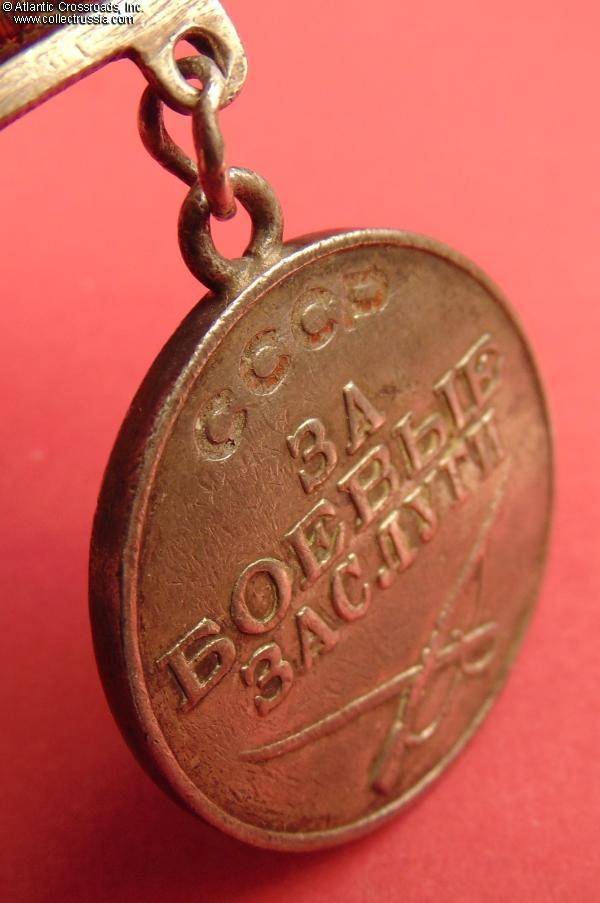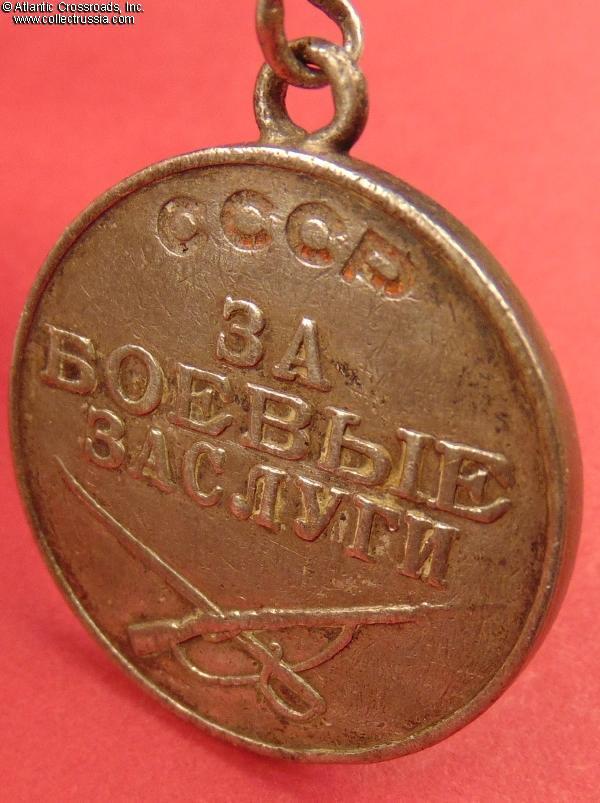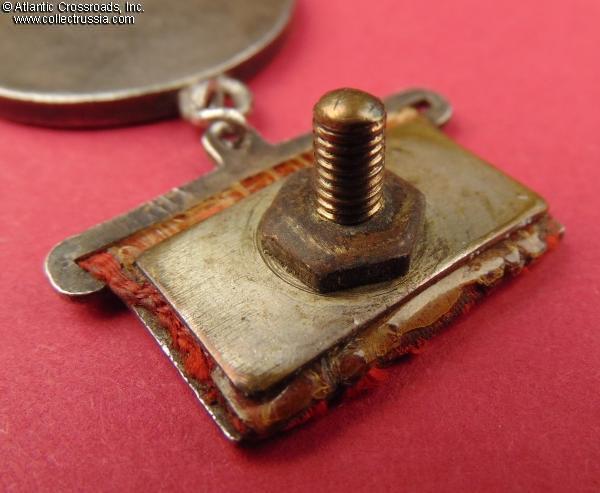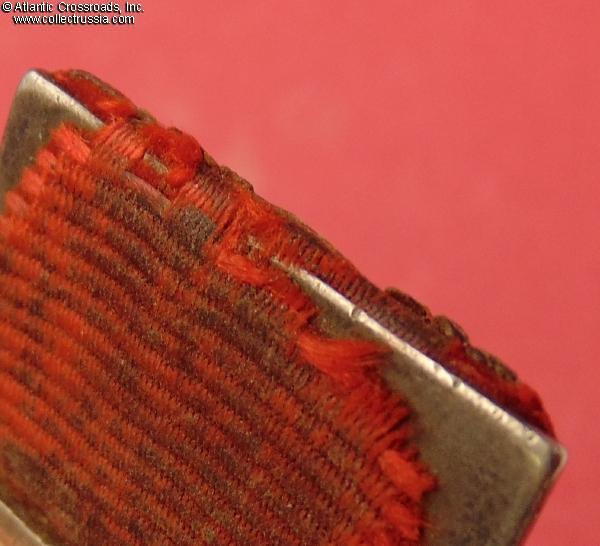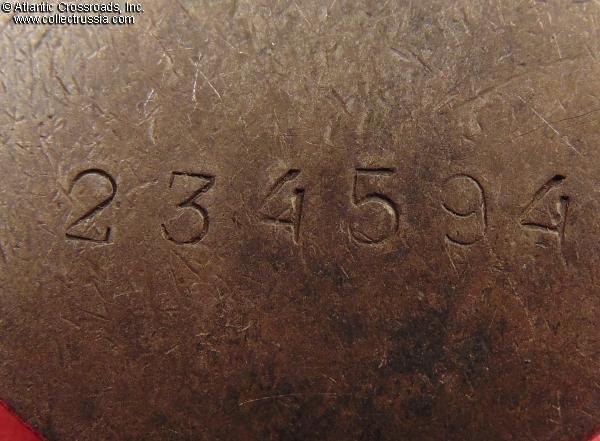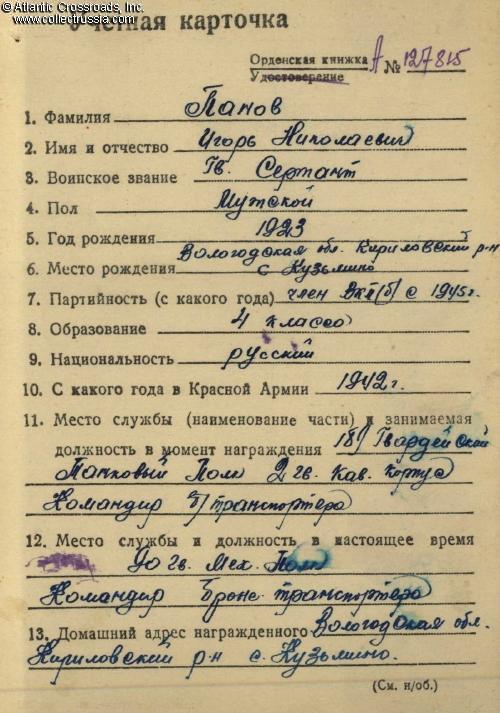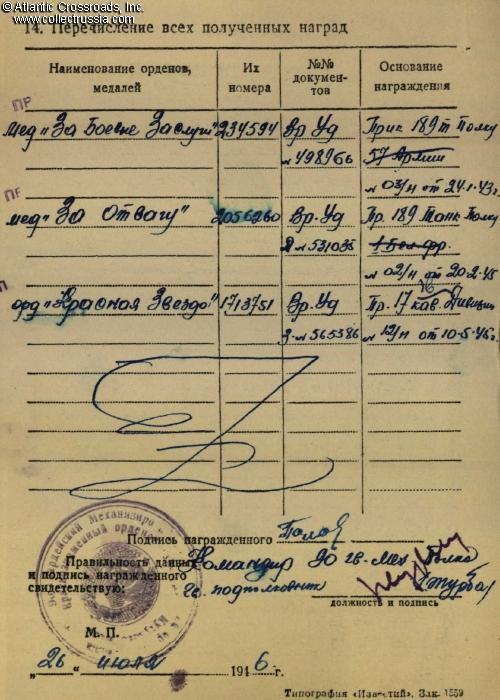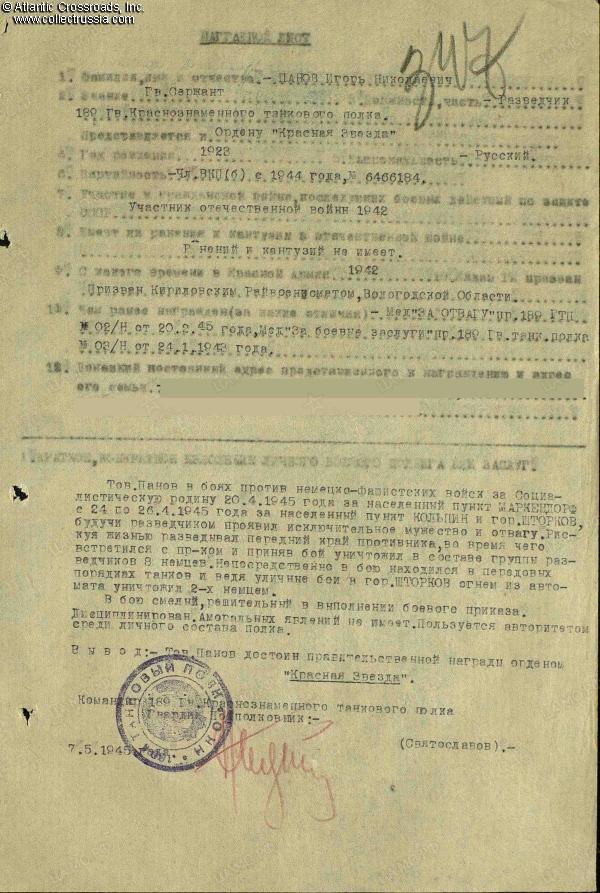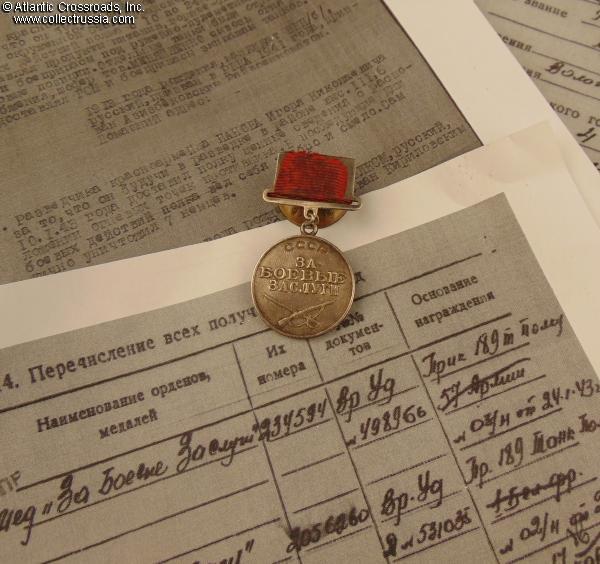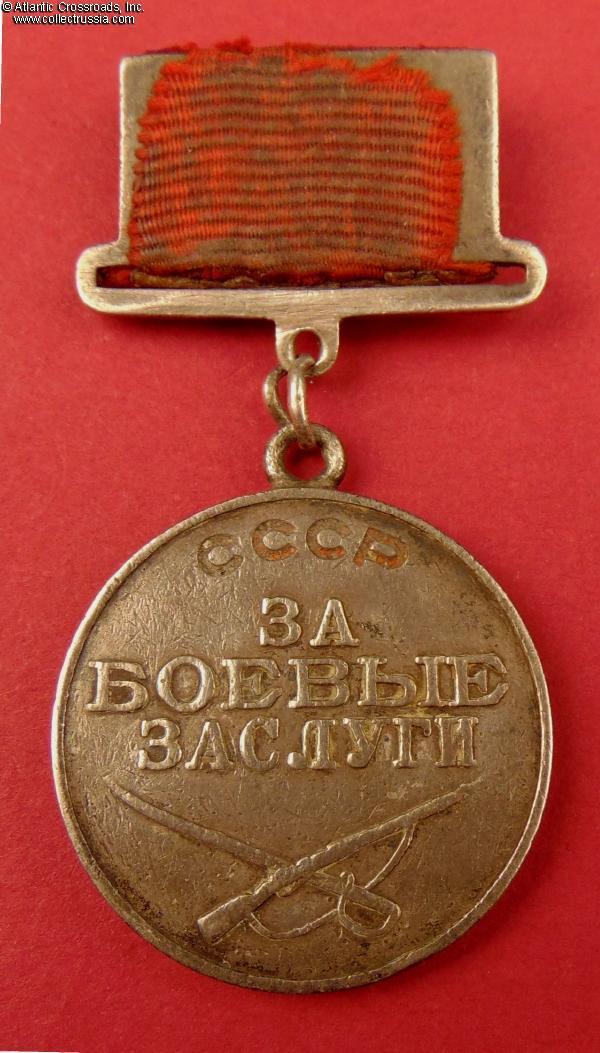
Medal for Combat Service, Type 1 Variation 3, "Thick" Sub-Variation, #234594, awarded on 24 January 1943 to Private Igor Panov (Игорь Николаевич Панов), a reconnaissance scout of the 189th Tank Regiment, 57th Army, Don Front, for bravery during the Battle of Stalingrad.
The medallion is in silver and lacquer; measures 2.7 mm thick, 32.1 mm wide. The suspension is in silver or German silver, 25.1 mm wide at the top, 17.3 mm tall not including the lip for the connecting link.
In very fine condition, above average for the early type. The original lacquer in the letters shows wear and rubbing to the outer layer, but most of it is nevertheless still present, which is uncommon. The medallion is free of edge knocks or significant scratches. There is light wear to the high points of the artwork, but the details raised lettering, sword and rifle
The medallion is in silver and lacquer; measures 2.7 mm thick, 32.1 mm wide. The suspension is in silver or German silver, 25.1 mm wide at the top, 17.3 mm tall not including the lip for the connecting link.
In very fine condition, above average for the early type. The original lacquer in the letters shows wear and rubbing to the outer layer, but most of it is nevertheless still present, which is uncommon. The medallion is free of edge knocks or significant scratches. There is light wear to the high points of the artwork, but the details raised lettering, sword and rifle are still overall well-preserved. Very attractive toning to silver.
Comes on original suspension device, complete with the hexagon nut, rectangular back plate in silver-plated brass, and mint-marked brass screw plate. The screw post is of full length, well over 9 mm measured from the rectangular back plate. The ribbon shows much wear, soiling, and fraying on the edges but remains overall sound; judging by how it has "grown" into the suspension device, it is almost certainly original to the medal. Note that remnants of the translucent celluloid protective film that once covered the ribbon are still visible on the reverse along the upper and lower edges of the rectangular back plate. The connecting link appears to be original as well and although twisted from the weight of the medallion, remains sound; its ends are still joined with solder. Overall, a well-preserved and attractive Type 1 medal, showing a great amount of character.
Igor Panov was born in 1923 in a village of the Vologda region of Russia. He joined the Red Army in 1942 and was apparently immediately sent to the front. He took part in the Battle of Stalingrad as a reconnaissance man with the 189th Tank Regiment, 57th Army. A part of the Stalingrad Front, the army played a key role in the defensive phase of the battle by thwarting German attempts to break into Stalingrad from the south. In late November, it went over to the offensive as part of the Soviet Operation Uranus and jointly with another army of the Stalingrad Front, destroyed the opposing VI Army Corps of the Romanian IV Army. It thus opened a breach in the enemy defenses allowing the southern Soviet pincer to move freely and complete the encirclement around Stalingrad.
On 1 January 1943, the 57th Army was re-subordinated to the Don Front in preparation for the Operation Koltso ("Ring") which would be the final Soviet push annihilating whatever was left of the German forces in Stalingrad. Initially, the army was deployed south of the village of Karpovka on the western side of the Stalingrad pocket, facing the German XIV Panzer Corps. Private Panov distinguished himself on 10 January 1943, the opening day of the offensive. He successfully reconnoitered a dominant height, determining the exact location of the German weapon nests. On the following day, he acted bravely and resolutely in an infantry assault, killing seven German soldiers. By the next day, the 57th Army along with the other Soviet armies on the western side of the pocked was exerting strong pressure on the outer German defenses. By 16 January, this combined effort led to the Germans losing the airfield at Pitomnik, the main lifeline of the Stalingrad pocket; by 17 January, the 57th Army was in the vicinity of the Voroponovo Railway Station, the final blocking position before the city of Stalingrad. The German resistance would collapse within two weeks, ending in the first truly major disaster the Wehrmacht would suffer in WW2 -politically and morally, quite possibly the worst of the entire war. It is fair to say that Private Panov made a tangible contribution to this outcome.
Panov continued to fight with great distinction through the end of the war, as a recon scout at times and at others, as a tank-born infantryman. On 17 February, by then already a Guards Sergeant and still serving with the 189th Tank Regiment (then under the 17th Guards Cavalry Division, 2nd Guards Cavalry Corps, 1st Belorussian Front), he killed three German soldiers with his submachine gun and took two prisoners in a skirmish near the town of Jastrowie (aka Jastrow) in northwestern Poland. Three days later, he was decorated for this feat with a Medal for Valor. Panov's final award of the war was the Order of the Red Star he earned from 20-26 April 1945 in the storming of Markendorf, a suburb of Frankfurt-am-Oder, and the town of Storkow in the Brandenburg Province of Germany. On one occasion, Panov acted as a part of a recon group that not only accomplished its mission, but also eliminated eight German soldiers. In Storkow, Panov advanced with the forward line of tanks, showing exceptional bravery in house-to-house battles and killing two enemy soldiers. The Order of the Red Star was bestowed upon him on 10 May 1945.
Either on the last days of the war or soon after its end, Panov was put in command of an armored personnel carrier crew. He remained on active duty with the 189th Tank Regiment at least through July 1946. Almost incredibly, he had gone through the war unscathed, never getting wounded despite constantly risking his life in close combat all the way from Stalingrad to Frankfurt.
Research Materials: photocopy of the award record card and award commendations for the Medal for Combat Service, Medal for Valor, and
the Order of the Red Star.
$680.00 Add to cart


